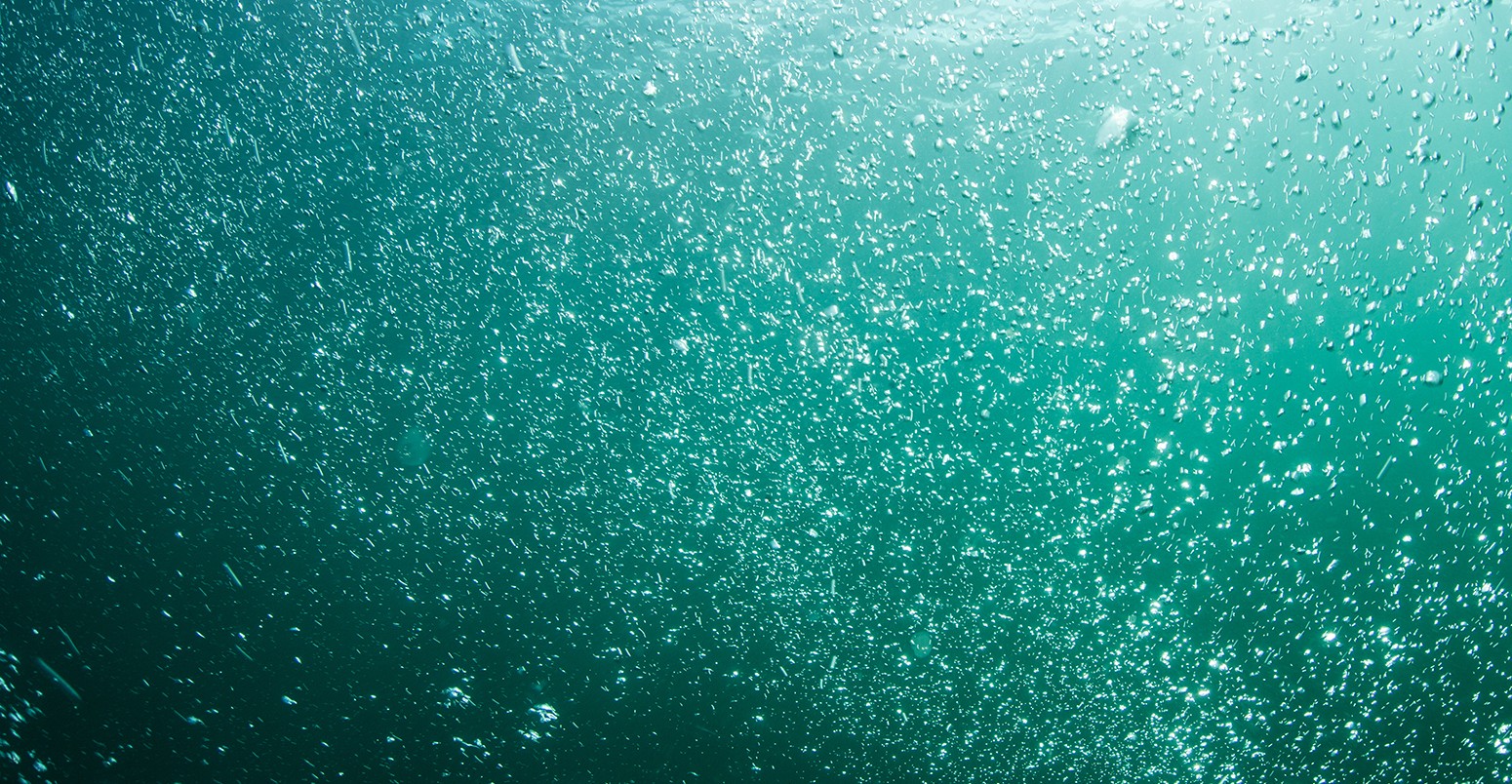
Tiny marine plants could amplify Arctic warming by 20%, new study finds
Robert McSweeney
04.20.15Robert McSweeney
20.04.2015 | 8:00pmTemperatures in the Arctic are rising faster than the rest of the world. Now, new research suggests microscopic algae could speed up warming even further.
These miniscule floating plants, which do everything from storing carbon to supporting the ocean food web, could drive faster sea ice melt as the Earth heats up, the lead author tells Carbon Brief.
Microalgae are already showing signs of adapting to warmer oceans, says a second study. But this is no guarantee they’ll be able to cope with future temperature increases, the researchers say.
Foundation for life
Microalgae, or phytoplankton, are tiny plants that float in the upper part of the ocean. Just like plants on land, they photosynthesise – using sunlight and carbon dioxide to generate energy for growth. In this way they take carbon dioxide out of atmosphere and help to buffer the impact of emissions from human activities.
The by-product of photosynthesis is oxygen, and microalgae are responsible for producing around half of the oxygen in the atmosphere. Microalgae are also the foundation of the food web, meaning they’re ultimately the reason there’s any life in the oceans at all.
As algae serve such an important purpose, scientists are trying to work out how their abundance and distribution could change in the future as the Earth warms.
Positive feedback
Temperatures in the Arctic are increasing around twice as fast as the global average. The intense warming, known as Arctic amplification, is largely caused by diminishing sea ice. Energy from the sun that would have been reflected away by sea ice is instead absorbed by the ocean.
Previous research has shown that shrinking sea ice has given a boost to algae abundance. But there’s a downside to this accelerated growth. A new study, published in Proceedings of the National Academy of Sciences, suggests the increase in algae could intensify Arctic warming, and sea ice melt, in the future.
So how could algal blooms intensify sea ice decline? As the Arctic warms up and the sea ice melts, more sunlight can penetrate into the ocean surface, triggering more growth in the algae.
With more microalgae floating around in the surface waters of the ocean, they absorb an increasing amount of the sun’s energy, which causes the water to warm up. A warmer ocean means more sea ice melts, boosting algal growth even further, and creating a positive feedback loop.
Ecosystem model
The researchers looked at how this feedback loop could play out in a changing climate. They linked their marine ecosystem model to a climate model and ran simulations where carbon dioxide levels increase by 1% per year until the total amount in the atmosphere is twice what it was in 1990.
You can see the results in the maps below. These show the difference in Arctic temperature and sea ice between model runs with and without the added impacts of microalgae.
Projections of Arctic changes under a doubling of atmospheric carbon dioxide: A) annual average temperature, B) sea ice concentration, C) number of ice-free days, and D) concentration of chlorophyll. Source: Park et al. (2015).
The top-left map shows the Arctic could be an average of about 0.7C warmer at the point of carbon dioxide doubling because of the additional microalgae – that’s about 20% more than without it. The biggest warming changes are projected for the Kara Sea and Chukchi Seas in the Arctic, which is consistent with what scientists have seen happening recently, the paper says.
The models don’t project the amount of microalgae directly, but instead estimate changes in chlorophyll, the pigment that gives algae its green colour. The biggest boost to algal growth is in spring (shown in the bottom-right map), when sea ice begins its seasonal melting cycle.
The extra warming has implications for Arctic sea ice extent, with further reductions of up to 10% (top-right map), and as many as 50 extra days ice-free each year for parts of the Arctic (bottom-left map).
Dr Jong-Yeon Park, lead author and researcher at the Max Planck Institute for Meteorology, tells Carbon Brief:
“Based on our model experiments, the geophysical impact of Arctic phytoplankton may accelerate decline of future Arctic sea ice.”
Evolution
While microalgae could amplify warming in the Arctic, a separate study, published in the same journal, suggests they may already be adapting to climate change elsewhere.
Researchers used 15-years of microalgae data from the Carbon Retention In A Colored Ocean (CARIACO ) project, which has been collecting samples of algae off the coast of Venezuela since 1995.
Prof Andrew Irwin, lead author and associate professor at Mount Allison University in Canada, explains to Carbon Brief why algae can evolve this quickly:
“Phytoplankton are likely to adapt because of two factors: their short generation times – a few days – and their large population sizes which sustain a large amount of genetic diversity.”
Ecosystem models tend to assume that algae won’t change or adapt to warming conditions, says Irwin. But their research suggests scientists need to re-think how they make projections of how algae will respond to climate change over the next 50 to 100 years, he says.
But that’s not to say microalgae will definitely be fine as the oceans continue to warm, the paper concludes. Scientists still don’t how much algae will be able to adapt, so it’s not possible to say just yet how microalgae will be able to cope with the changes projected for the rest of this century.
Park, J-Y et al. (2015) Amplified Arctic warming by phytoplankton under greenhouse warming, Proceedings of the National Academy of Sciences, doi:10.1073/pnas.1414752112
Main image: Underwater in the northern Atlantic Ocean.
Irwin, A.J. et al (2015) Phytoplankton adapt to changing ocean environments, Proceedings of the National Academy of Sciences, doi:10.1073/pnas.1421475112


